
The culture of Argentina is as varied as the country geography and is composed of a mix of ethnic groups. Modern Argentine culture has been influenced largely by the Spanish colonial period and the 19th/20th century European immigration, and also by Amerindian culture, particularly in the fields of music and art. Buenos Aires, its cultural capital, is largely characterized by both the prevalence of people of Southern European descent, and of European styles in architecture. Museums, cinemas, and galleries are abundant in all of the large urban centers, as well as traditional establishments such as literary bars, or bars offering live music of a variety of music genres.
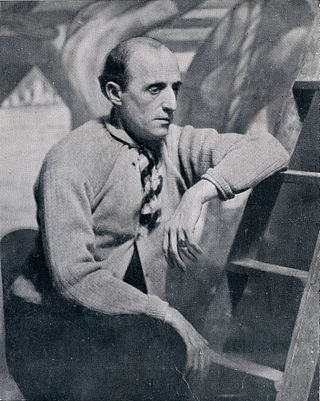
Benito Quinquela Martín was an Argentine painter. Quinquela Martín is considered the port painter-par-excellence and one of the most popular Argentine painters. His paintings of port scenes show the activity, vigor and roughness of the daily life in the port of La Boca.

Cándido López was an Argentine soldier and painter who worked in the Naïve style. He is best known for his historical scenes from the Paraguayan War in which he fought.
Manzoni is an Italian surname, and may refer to:
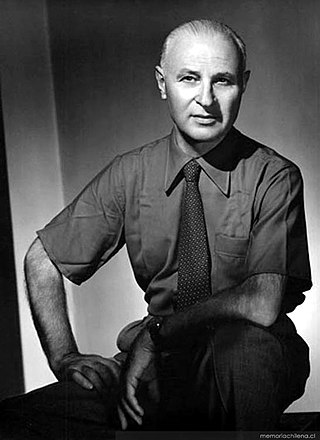
Emilio Pettoruti (1892–1971) was an Argentine painter, who caused a scandal with his avant-garde cubist exhibition in 1924 in Buenos Aires. At the beginning of the twentieth century, Buenos Aires was a city full of artistic development. Pettoruti's career was thriving during the 1920s when "Argentina witnessed a decade of dynamic artistic activity; it was an era of euphoria, a time when the definition of modernity was developed." While Pettoruti was influenced by Cubism, Futurism, Constructivism, and Abstraction, he did not claim to paint in any of those styles in particular. Exhibiting all over Europe and Argentina, Emilio Pettoruti is remembered as one of the most influential artists in Argentina in the 20th century for his unique style and vision.
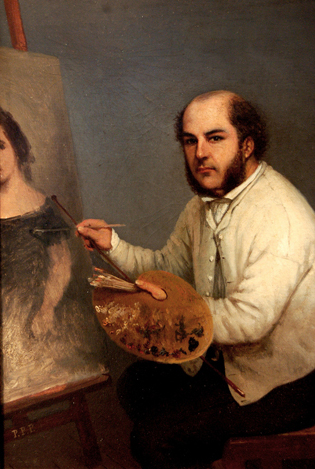
Prilidiano Pueyrredón was an Argentine painter, architect and engineer. One of the country's first prominent painters, he was known for his costumbrist sensibility and preference for everyday themes.

José Moreno Carbonero was a Spanish painter and decorator. A prominent member of the Málaga School of Painting, he is considered one of the last great history painters of the 19th century. He was a celebrated portrait painter who enjoyed the patronage of Madrid's high society. He also created genre scenes and some landscapes, vedutas and still lifes.
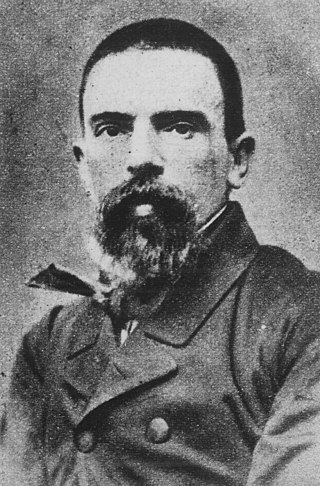
Juan Manuel Blanes was a Uruguayan painter of the Realist school.
Antonio Alice was an Argentine portrait painter. He was awarded the Prix de Rome in 1904.

Charles Henri Pellegrini was an Italian Argentine engineer, lithographer, painter, and architect.

Pedro León Maximiano María Subercaseaux Errázuriz was a Chilean painter, son of the painter and diplomat Ramón Subercaseaux Vicuña. He painted many portraits about events from the history of Chile, such as the Crossing of the Andes. He painted portraits of the history of Argentina requested during the Argentina Centennial. He married Elvira Lyon Otaégui in 1907, but the Pope later annulled their marriage so that they could both get into religious orders.
Aquiles Badi (1894–1976) was twentieth-century Argentine painter. He was born in Buenos Aires on April 14, 1894, and died in that same city on May 8, 1976.
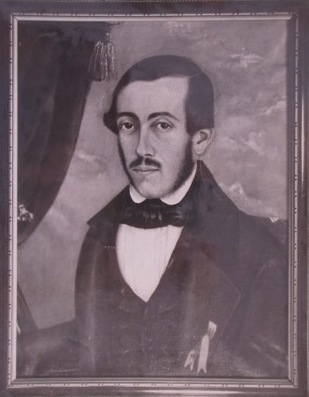
Benjamin Franklin Rawson was an Argentine painter who belonged to the first generation of Argentine painters called the "precursors". His best known works are the Murder of Manuel Vicente Maza and Rescue in the Cordillera.
Jorge Fernández-Trevejo Rivas is a Cuban artist, painter, and caricaturist. He currently resides in Argentina.

Alfredo Nicolás Guttero was an Argentine modernist painter and art promoter.

Ángel Della Valle was an Argentine painter in the Realistic style who belonged to the "Generation of '80".

Reinaldo Giudici was an Italian-born Argentine painter, best known for his early genre works in the Costumbrismo style.
Luigi De Servi was a French-Italian painter active mainly painting sacred subjects in a late-Mannerist style in Siena, Tuscany, Italy.

Eugenia Belín Sarmiento was an Argentinean painter and author. Her works were featured in various international shows, among them the first Exposición Anual de Pintura, Dibujo y Escultura for artists of South America in 1893. Critical response to her works has often focused attention on her portraits of her grandfather, Domingo Faustino Sarmiento, who was president of Argentina from 1868 to 1874. Eugenia completed many other works as well, including miniatures as well as full size portraits, paintings of flowers, birds, and still lives, and sculptures.

Augusto Ballerini was an Argentine painter of portraits, historical scenes and landscapes.
















